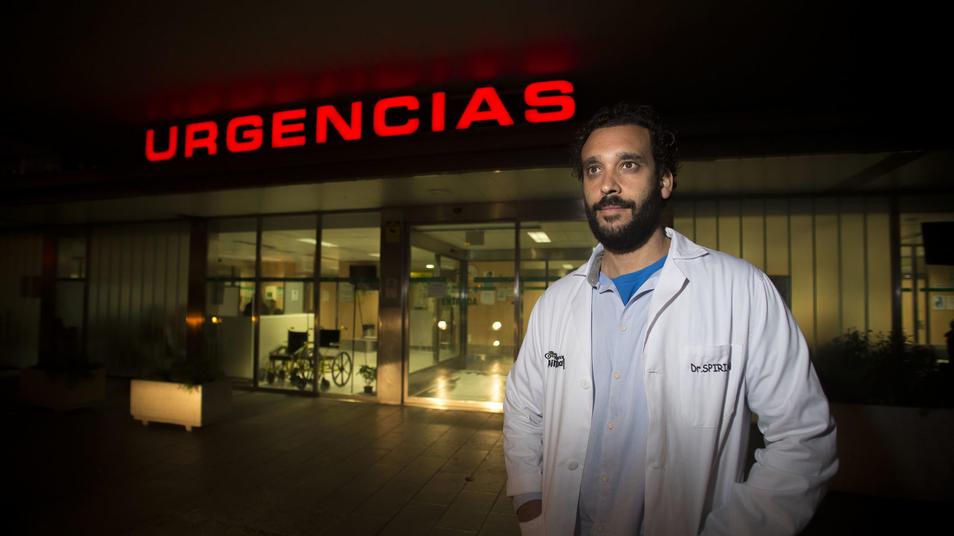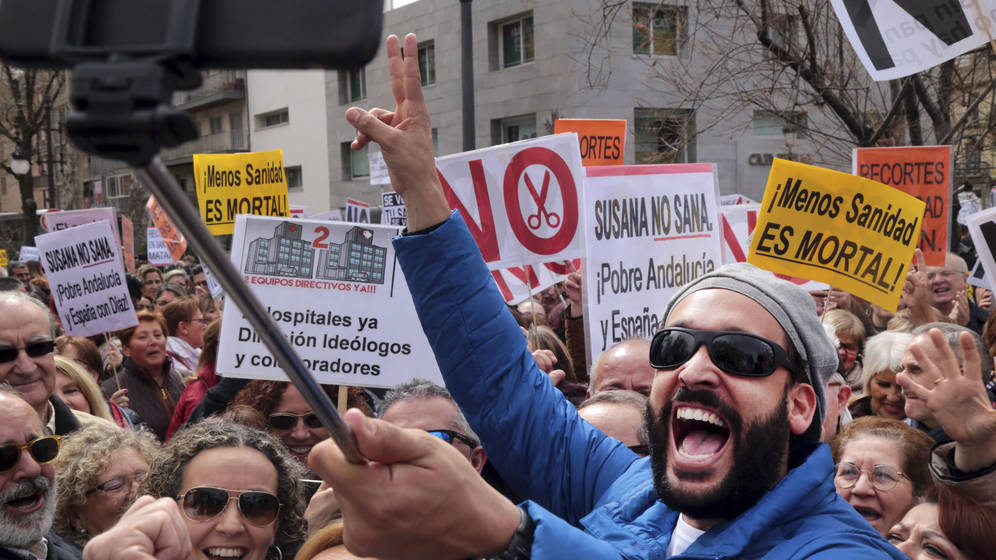Media and Twitter Agendas for Social Mobilizations

This article published at the International Journal of Communication (IJoC, vol. 14, 2020) analyzes the citizen movement in defense of the public health system and against the proposal of merging two hospitals in the city of Granada. The merger was scarcely covered by the mainstream media until a physician denounced the hospital system reform in a Facebook video that soon went viral. From that moment, a social online mobilization began facilitating greater involvement of citizens and civic organizations, reaching traditional political actors.
Using a multimethod approach and based on content analysis, interviews, and social networks analysis, this case illustrates the mobilizing capacity of social media, highlighting the ability to overcome the traditional lack of agency that is associated with virtual mobilizations. It also demonstrates the ability of social media to set the social agenda and to influence the mainstream media, which are then “forced” to introduce the demand into their agenda. Finally, it also shows how new online social leaders become microcelebrities with high mobilizing capacities.
The Case of the Protests in Defense of the Public Healthcare System in Spain
Our case study presents a social movement that, by starting with online mobilizations, successfully mobilized citizens and influenced media agendas. Hence, our research objectives will focus on discovering how agenda setting worked in this specific case study and the roles of social media in shaping public opinion.
The case of Granada demonstrates the ability of social media to set the social agenda and to influence the media.
We argue that former studies were based on general surveys and the study of general interest in broad topics, without attention to specific case studies. Hence, theories that might work in the “macro” dimension (general issues of interest) might not be as useful at the “micro” level of analysis (specific public issues and local case studies). Because the quality of the healthcare system is one of the main concerns of citizens in Spain, the first research objective is:

RO1: To analyze the role of news media in covering the merger of the two hospitals in Granada and the resulting social protests
Insofar as antiausterity movements across Europe used social media for both mobilizations and organization, as well as to engender an alternative public sphere out of the traditional media, the second research objective is:
RO2: To study the role of social media sites within the movement in defense of the healthcare system in Granada and to assess its power to establish the agenda, in both social media and legacy media.
Furthermore, the social movement in defense of the healthcare system in Granada carries great relevance because it is an example of a social movement that fulfills its objectives. In this case, protesters successfully make the situation well known among broader sectors of public opinion, channeling the energies of citizens into effective political actions. Finally, they manage to access the political arena and force political representatives to change their initial planned policies. Our third research objective addresses the way in which the social movement is structured and organized online, to evaluate the factors that made it so successful:
RO3: To determine the specific characteristics and structure of the antimerging social movement on social media and to assess why it manages to be relevant both online and offline.

The foundational arguments of agenda-setting theory hold that news media determine the public issues that citizens consider more relevant, and they consequently hold great power in the public sphere (McCombs & Shaw, 1972). With the advent of a hybrid media system, various voices have arisen that question the validity of the theory and defend the ability of social media to shape their own public agenda and transfer it to the legacy media agenda. Our results point in this direction, in a case study in which social
media showed a high capacity to shape public opinion and the news’ media agenda.
The leading figure of Spiriman had a crucial role in the mobilizations.
The case of Granada illustrates the mobilizing effect of social media among those sectors of society that consume less news from traditional sources (Best & Krueger, 2005; Jensen, 2006; Norris, 2001), thereby highlighting the public’s ability to overcome the traditional lack of agency that the virtual
mobilizations are often accused of having (Suau, 2015). It also demonstrates the ability of social media to set the social agenda and to influence the media, which end up reintroducing healthcare reorganization and social mobilizations into their agendas. This capacity, however, occurs because a series of elements converge. First, there must be concern about an issue—in this case, the healthcare system. The surveys confirm this. A second factor is the emergence of a new social leader who becomes a microcelebrity (Tufekci, 2013) with a strong mobilizing capacity (Meraz & Papacharissi, 2013).
The quantitative difference between the media coverage before and after the actions undertaken on social media by Spiriman are a clear example of this power to influence. The leading figure of Spiriman had a crucial role
in the mobilizations and the attitude change of media coverage regarding the merger—and yet, he is not devoid of controversy. After the success of the protests, Spiriman became a very popular person, not only in Granada, but also in the whole of Andalusia; in addition, he has been involved in various disputes, some of which have ended up in court.